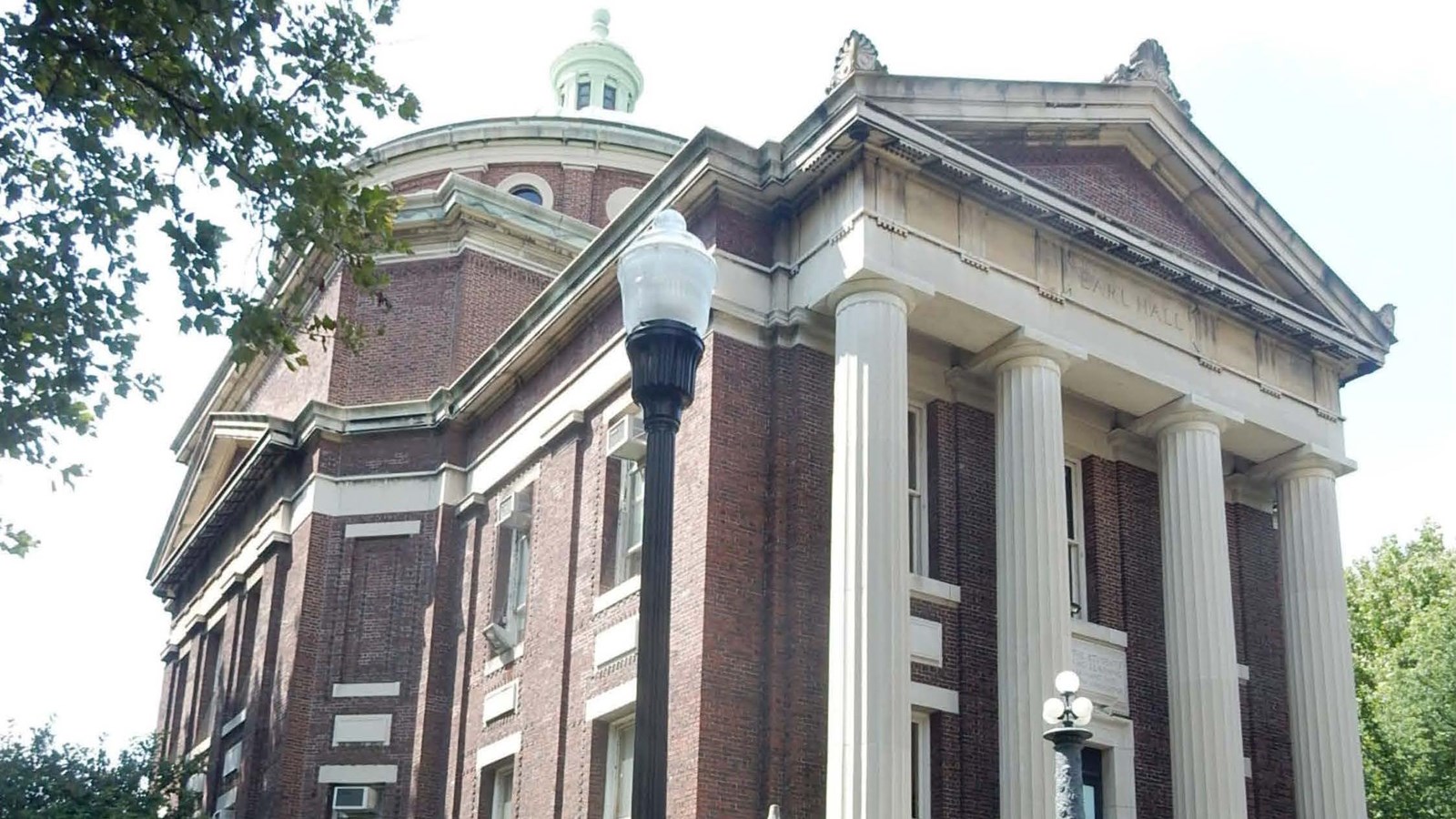Last updated: February 20, 2025
Place
Earl Hall

Photograph by Christopher D. Brazee, courtesy of New York State Historic Preservation Office
Quick Facts
Location:
2980 Broadway New York, NY
Significance:
Social, LGB History
Designation:
Listed in the National Register – Reference number 100002189
OPEN TO PUBLIC:
No
MANAGED BY:
Earl Hall, located on the campus of Columbia University in the New York City borough of Manhattan in New York, was listed in the National Register of Historic Places in 2018. Earl Hall is significant for its early and significant association with Columbia’s LGB community. Columbia University was the first university in the United States to have a gay student group – the Student Homophile League -- founded in 1966 and officially recognized by the university in 1967. The idea dates to the summer of 1966, when two Columbia students vacationing in Cherry Grove on Fire Island, a popular gay resort, decided to try to form a chapter of the Mattachine Society, an early gay rights group, at Columbia. They looked for an ally on campus and found university chaplain John Dyson Cannon, who responded with support and courage. On October 28, 1966, three students organized a meeting sponsored by Chaplain Cannon that took place in the Dodge Room on the second floor of Earl Hall. This is considered the birthday of the Columbia group. In 1967, the Student Homophile League was formally established with the assistance of Chaplain Cannon with offices and meeting spaces in Earl Hall.
Over the next few years, the group was located in various rooms in the building. An Earl Hall location was appropriate, as the building’s donor had specified that it be used to help students balance their intellectual, physical, and spiritual life. Given that homosexuality was severely stigmatized in the 1960s and that gays were not just discriminated against but labeled as deviants or sinners, the need for an advocacy group and a place of companionship and refuge for young people was a critical need on university campuses. Although the university resisted, national advocates such as Franklin Kameny and Barbara Gittings supported the group, and advocates and students fought hard to overcome the administration’s objections. Finally accepted, the group hoped, among other goals, to initiate discussion and dialogue about homosexuality, invite speakers to campus, effect the integration of homosexuals into the religious life of the community, encourage homosexuals to accept themselves, and offer counseling services.
Beginning in 1970, the Homophile League’s successor organization, Gay People at Columbia (also known as Gay People at Columbia-Barnard), which also had offices at Earl Hall, began holding regularly scheduled monthly gay dances in the Earl Hall auditorium. These dances grew into one of the most important gay social events in New York and eventually attracted large numbers of LGB people from all over the city. By the 1980s, these dances, the first at an American university, drew attendance of over 1,000 and had evolved into one of the most important LGB social events in New York City, an event that was especially popular with younger men and with men who felt uncomfortable in gay bars and clubs.
The hall, designed by McKim, Mead, and White, was built between 1901 and 1902. The building is a three-story building constructed with red brick with a limestone portico, granite stairs, and a copper dome and lantern. The front entrance to the building is on the second floor and is raised above campus level by a long flight of twenty-two granite stairs with triple, stepped wing walls of granite. The top wing walls support Renaissance-inspired bronze torchères with classical ornamental details.
Over the next few years, the group was located in various rooms in the building. An Earl Hall location was appropriate, as the building’s donor had specified that it be used to help students balance their intellectual, physical, and spiritual life. Given that homosexuality was severely stigmatized in the 1960s and that gays were not just discriminated against but labeled as deviants or sinners, the need for an advocacy group and a place of companionship and refuge for young people was a critical need on university campuses. Although the university resisted, national advocates such as Franklin Kameny and Barbara Gittings supported the group, and advocates and students fought hard to overcome the administration’s objections. Finally accepted, the group hoped, among other goals, to initiate discussion and dialogue about homosexuality, invite speakers to campus, effect the integration of homosexuals into the religious life of the community, encourage homosexuals to accept themselves, and offer counseling services.
Beginning in 1970, the Homophile League’s successor organization, Gay People at Columbia (also known as Gay People at Columbia-Barnard), which also had offices at Earl Hall, began holding regularly scheduled monthly gay dances in the Earl Hall auditorium. These dances grew into one of the most important gay social events in New York and eventually attracted large numbers of LGB people from all over the city. By the 1980s, these dances, the first at an American university, drew attendance of over 1,000 and had evolved into one of the most important LGB social events in New York City, an event that was especially popular with younger men and with men who felt uncomfortable in gay bars and clubs.
The hall, designed by McKim, Mead, and White, was built between 1901 and 1902. The building is a three-story building constructed with red brick with a limestone portico, granite stairs, and a copper dome and lantern. The front entrance to the building is on the second floor and is raised above campus level by a long flight of twenty-two granite stairs with triple, stepped wing walls of granite. The top wing walls support Renaissance-inspired bronze torchères with classical ornamental details.
